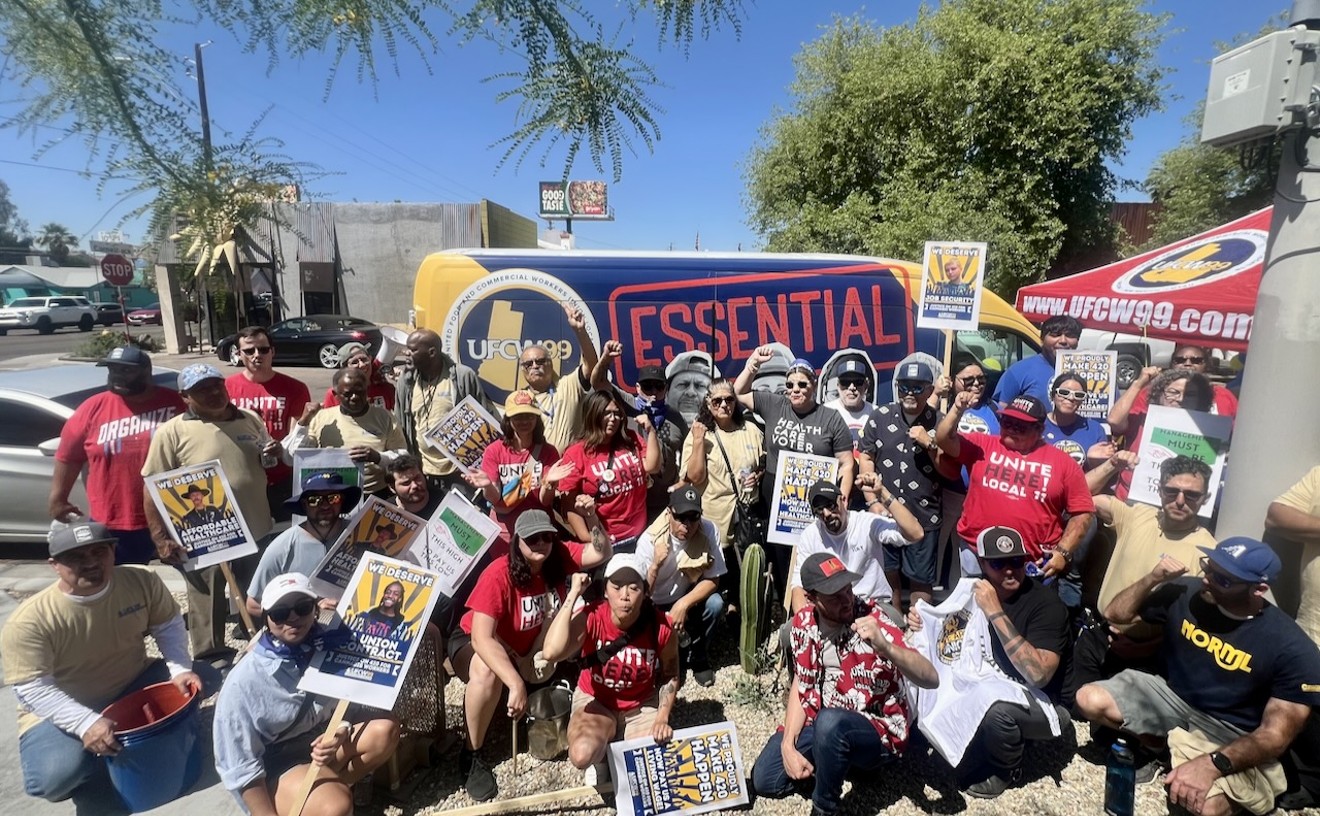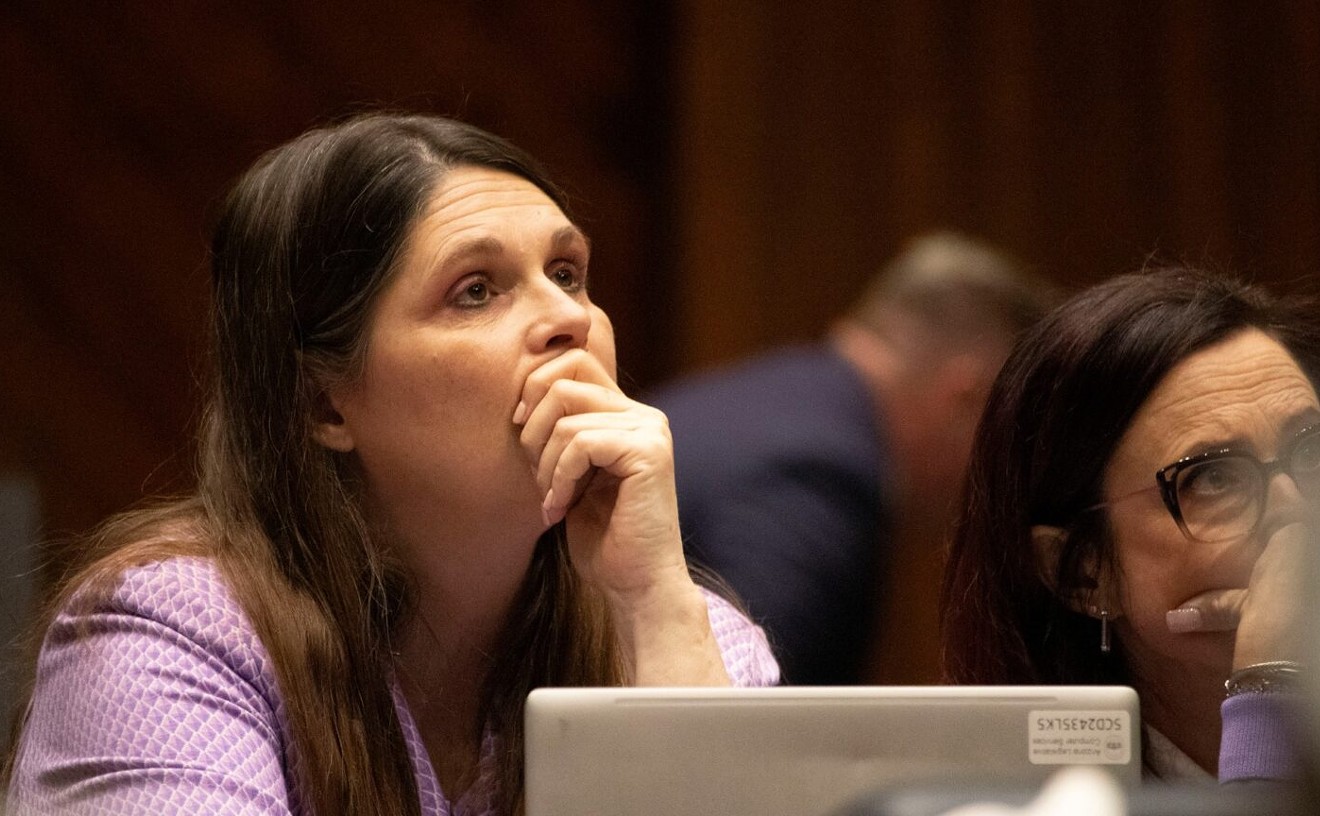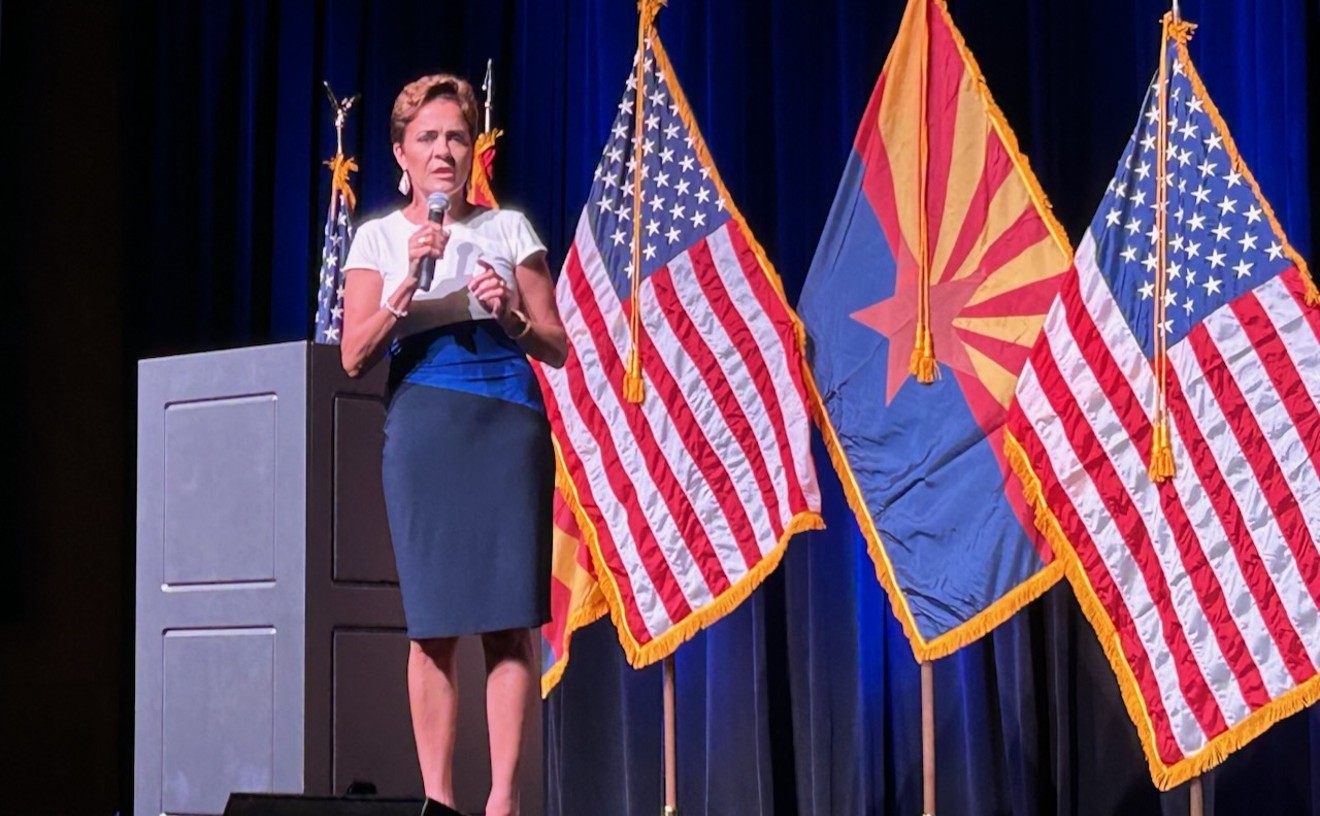Judging by the latest information, a plane crash into the western flanks of the Superstition Mountains appears to have been the result of an "awful mistake," says a flight-school instructor.
Six people -- three men and one of the men's three young children -- were killed when the twin-engine plane hit the mountain and exploded on November 23, just minutes after taking off from Mesa's Falcon Field Airport.
"I can only speculate that they misread their chart," says Jeff Baber, owner of Sun Country Flight Services at Falcon Field. "I wouldn't fly that close to the mountains at night, when I can't see them."
The group had been headed to Safford, in eastern Arizona. Typically, a pilot would fly a little south to avoid the mountains at night, though it's also acceptable to fly over them after receiving clearance from the control tower, Baber says.
We called Mike Huhn, an investigator with the National Transportation Safety Board, to ask whether any evasive action had been taken by the plane before impact.
"The radar data shows them tracking what we call 'straight and level,'" Huhn says. "It ends basically at the mountain."
For about 500 feet in every direction, the highest point of the cliffs were only about 150 feet above the impact zone, Huhn says. In other words, the airplane almost missed the crag.
Radar shows the plane was at 4,500 feet, however, and the elevation of the Supes is 5,057 at its highest point, meaning that if it had cleared the cliffs near the Flat Iro, (also known as Ship Rock), it still might have been in trouble. Just northeast of the prow-like formation is another rise of rocks.
Huhn says he's still trying to determine who was flying the plane and whether it was equipped with sensors that might have alerted the pilot to the danger. He expects to publish a report by the end of the week on the NTSB website. (Once there, do a search using the date or location of the crash).
The deceased are: Russel Hardy, 31, Shawn Perry, 39, and Joseph Hardwick, 22, and Perry's three kids, Morgan, 9, Logan, 8, and Luke, 6.
Perry and Hardy worked for Ponderosa Aviation of Safford.
Perry was director of operations, while Hardy was director of maintenance, according to a spring article in Flight Levels Online. Perry and Mikel Hardy, Russel's brother, were flight trainers.
Ponderosa was a family business -- the Hardy brothers' father, Gary, helped them buy the company in 2001, and all three of the men's wives worked there.
Today, the company e-mailed New Times a statement about the crash:
Ponderosa Aviation/Avionics and our families are deeply saddened by the loss of its Family and Friends in the recent crash of N690SM on the Eve of Thanksgiving. We appreciate the support and well wishes of all that have communicated to us. We are fully cooperating with the NTSB and trust the investigative agencies and their teams of professionals. We await their determination of why this tragedy occurred. Our thoughts and prayers go out to the Hardwick and Perry families.











